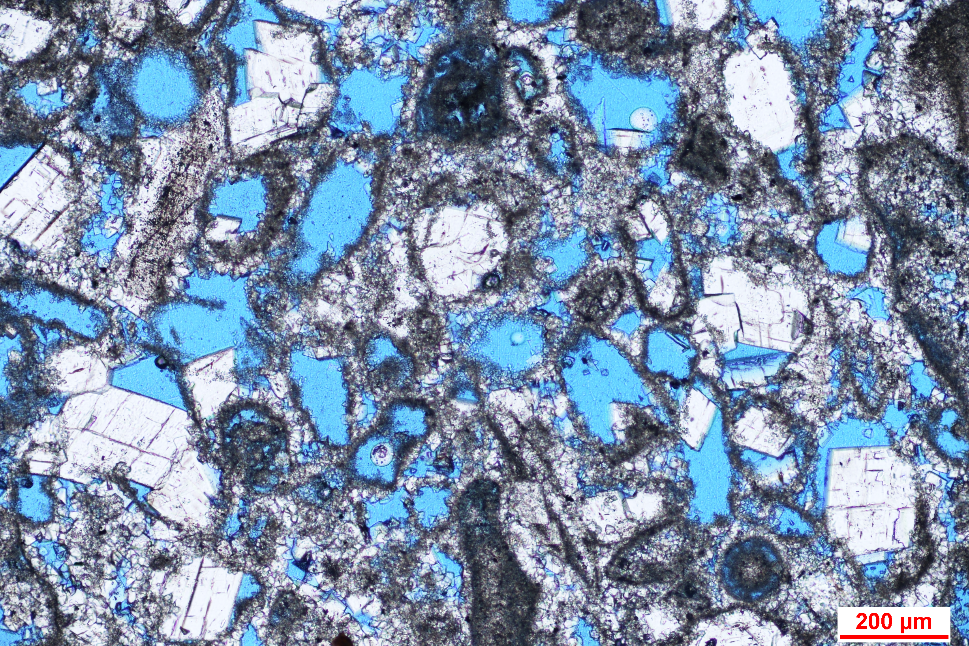November 2, 2020

Qilong Fu
Interpreting Sedimentary Rocks and Characterizing Hydrocarbon Reserves

Photomicrograph showing moldic pores partially filled with dolomite cement. The sample is from Pennsylvanian Strawn limestone in King County, northcentral Texas.
The sedimentary rocks that cover most of the Earth’s surface act as a history book of our planet's past life. As a sedimentologist, I work to interpret rock history and characterize hydrocarbon reservoirs as part of the State of Texas Advanced Resources Recovery (STARR) program.
Oil and gas are trapped predominantly in carbonate and siliciclastic rocks, two major types of sedimentary rocks, and the ultimate recovery of these hydrocarbons depends largely on our understanding of the reservoir rocks and innovative technology. My current research is focused on reservoirs rocks in the Permian Basin region and projects including carbonate reservoirs in the Eastern Shelf and Wolfcamp–Cline shales in the Midland Basin.
My work involves integrating core data, well logs, and accessible outcrops to better understand the impact of depositional facies and cycles, diagenetic alteration, and other factors on reservoir quality such as reservoir heterogeneity, pore networks, and permeability. I am also interested in extracting paleoenvironmental (paleoclimatic, paleoceanographic, and paleoecological) information recorded in sedimentary rocks and exploring the scientific significance of that information.

Alex Bump
Adapting Oil Industry Exploration for Carbon Capture and Storage
The birth of the oil industry in the 1850's set the world on a new course. Oil provided the energy to free the vast majority of people from agriculture, setting the stage for a flowering of invention, an explosion of population, and the creation of the Information Age. For a century and a half, oil explorers (myself included), have honed their craft, metaphorically peeling back the skin of the Earth to reveal what lies beneath. We’ve succeeded spectacularly, but there is a dark side to that success: Climate change, driven in large part by CO2 released from burning fossil fuels.
Today, we face the dual challenge of continuing to power the world economy while mitigating the worst effects of climate change. One way to do this is to capture CO2 released from large industrial point sources and store it deep underground, using the same reservoirs and seals that have trapped oil and gas throughout geologic time. Doing this is straightforward; doing it optimally and economically is not. I and my colleagues in the Gulf Coast Carbon Center are working to adapt the proven approaches of the oil industry to the new job of finding, de-risking, and monitoring carbon storage sites for the global transition to a new age of clean energy.

North-South geologic cross-section from roughly Dallas (left) to the deepwater Gulf of Mexico (right). Colored sections show sedimentary rocks by age, with mobile salt in pink. The swath of brighter colors near the top shows the depth window available for storing super-critical CO2 using the same reservoirs and seals proven by oil and gas production.